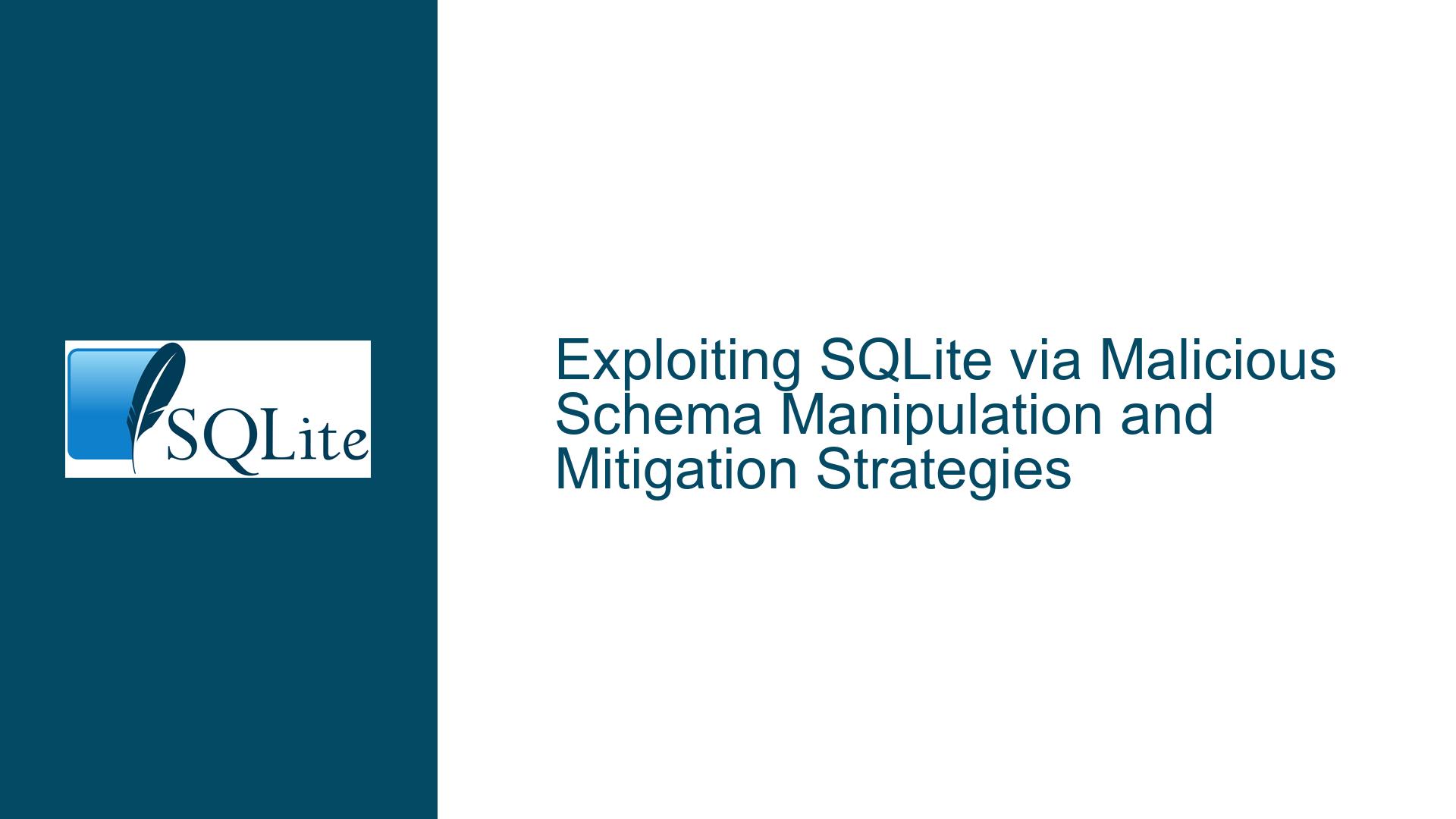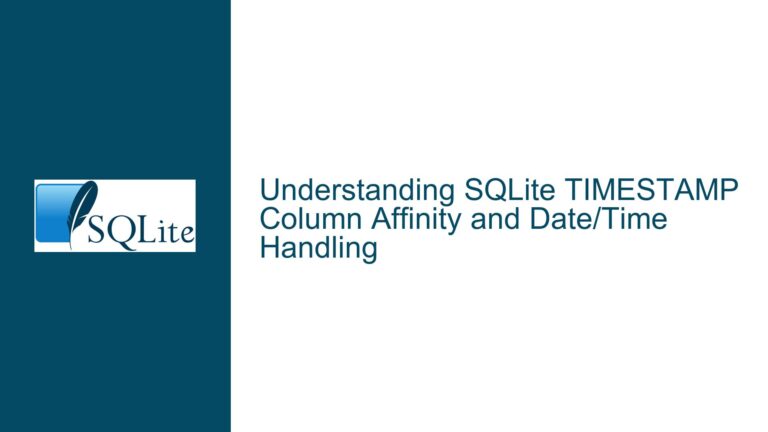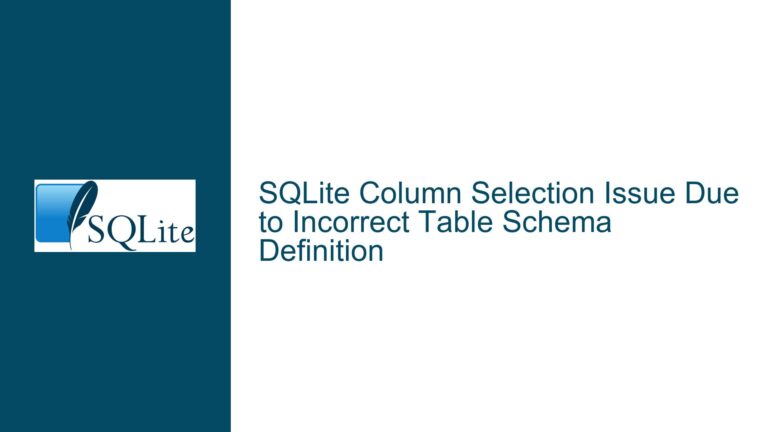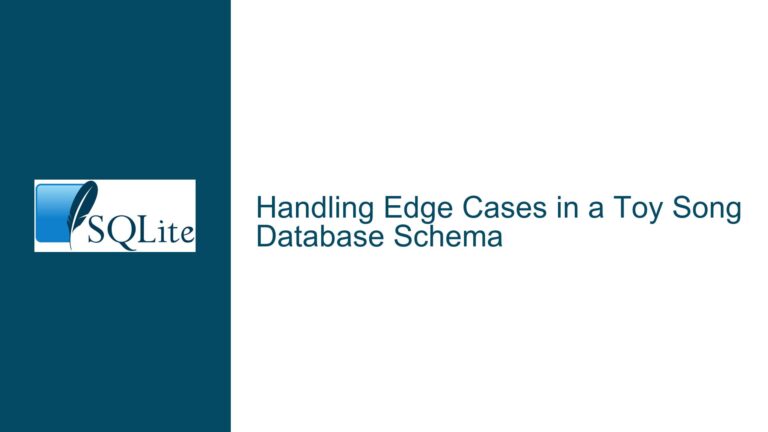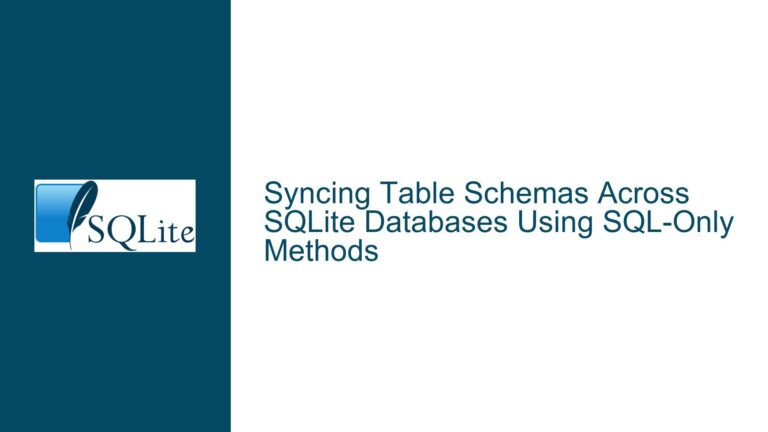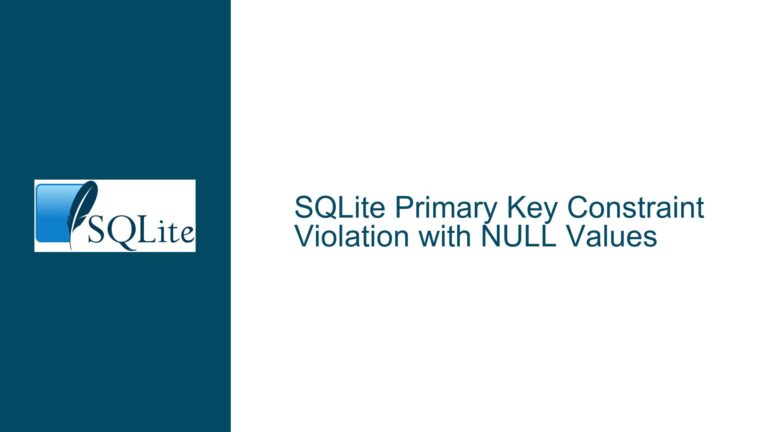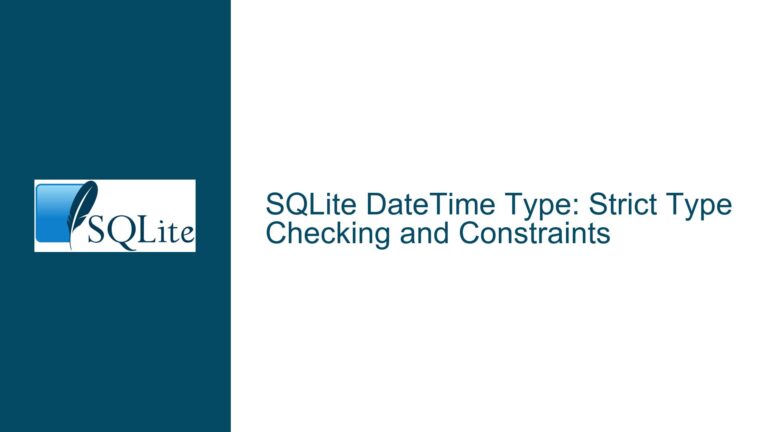Exploiting SQLite via Malicious Schema Manipulation and Mitigation Strategies
Malicious Schema Manipulation Leading to Unauthorized Function Execution
The core issue revolves around a sophisticated attack vector where an attacker can exploit SQLite databases by manipulating the schema in a way that triggers unauthorized execution of application-defined SQL functions. This attack is particularly insidious because it leverages the trust that applications place in the database schema and the data it contains. The attacker crafts a malicious database file that, when opened by the application, alters the schema to include a view that invokes a function with side effects, such as transferring funds or executing arbitrary code.
The attack hinges on several key components: the application must register custom SQL functions that have side effects, and it must execute predictable queries against the database. The attacker exploits these components by renaming the original table and creating a view with the same name as the original table. This view is designed to invoke the custom function when the application runs its predictable query. The result is that the application, believing it is simply querying a table, inadvertently executes the malicious function embedded within the view.
This type of attack is not a vulnerability in SQLite itself but rather a consequence of how applications use SQLite. The attack exploits the assumption that the database schema and its contents are safe and trustworthy. This assumption is often valid in controlled environments but becomes a liability when dealing with untrusted data sources.
Custom SQL Functions and Schema Manipulation as Attack Vectors
The attack vector described above relies on two primary mechanisms: the presence of custom SQL functions with side effects and the ability to manipulate the database schema. Custom SQL functions are functions defined by the application that extend the capabilities of SQLite. These functions can perform a wide range of operations, including operations that have side effects outside the database, such as modifying files or making network requests. When an application registers such functions, it opens the door for potential exploitation if those functions can be invoked through SQL queries.
Schema manipulation is the second critical component of this attack. SQLite allows for dynamic schema changes, including the creation and modification of tables, views, and triggers. An attacker can exploit this flexibility by altering the schema in a way that redirects the application’s queries to execute custom functions. For example, by renaming a table and creating a view with the same name, the attacker can ensure that any query targeting the original table will instead execute the view, which can be designed to invoke a custom function.
The combination of these two mechanisms creates a potent attack vector. The attacker does not need direct access to the application’s source code or the ability to modify the application itself. Instead, they only need to provide a malicious database file that the application will open and query. This makes the attack particularly dangerous in scenarios where the application processes untrusted database files, such as in data import/export functionalities or in applications that allow users to upload their own databases.
Implementing PRAGMA trusted_schema and Schema Validation for Security
To mitigate the risks associated with this attack vector, several strategies can be employed. The first and most straightforward approach is to use the PRAGMA trusted_schema setting in SQLite. By setting PRAGMA trusted_schema=OFF, you instruct SQLite to treat all application-defined SQL functions as if they were declared with the SQLITE_DIRECTONLY flag, even if they were not. This means that these functions can only be called from top-level SQL statements and not from within triggers or views. This effectively neutralizes the attack vector by preventing the malicious view from invoking the custom function.
Another important mitigation strategy is to validate the database schema before executing any queries. This involves scanning the schema for potentially malicious constructs, such as views that have the same names as the tables expected by the application. The following SQL query can be used to detect such views:
SELECT 1 FROM sqlite_master
WHERE type='view'
AND lower(name) IN ('tab_abc','tab_def','tab_ghi');
This query checks for views that match the names of the tables the application expects to query. If any such views are found, the application can reject the database or take other appropriate actions to prevent the attack.
In addition to these measures, it is recommended to disable views and triggers if they are not needed by the application. This can be done using the SQLITE_DBCONFIG_ENABLE_VIEW and SQLITE_DBCONFIG_ENABLE_TRIGGER options. Disabling these features reduces the attack surface by eliminating the mechanisms that the attacker would use to execute the malicious function.
For applications that must use custom SQL functions, it is crucial to declare these functions with the SQLITE_DIRECTONLY flag. This ensures that the functions can only be called from top-level SQL statements and not from within triggers or views. This adds an additional layer of security by limiting the contexts in which the functions can be invoked.
Finally, it is important to keep the SQLite library up to date. The SQLite development team continuously works on improving the security of the library, and newer versions often include fixes for potential vulnerabilities. By using the latest version of SQLite, you can benefit from these improvements and reduce the risk of exploitation.
In conclusion, the attack vector described in this discussion is a powerful reminder of the importance of securing database interactions, especially when dealing with untrusted data sources. By implementing the mitigation strategies outlined above, you can significantly reduce the risk of exploitation and ensure that your application remains secure.
